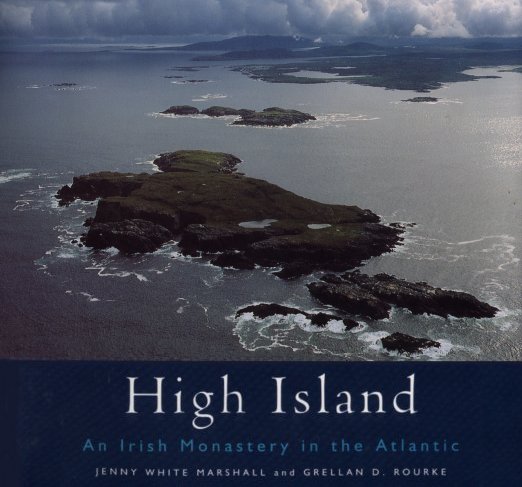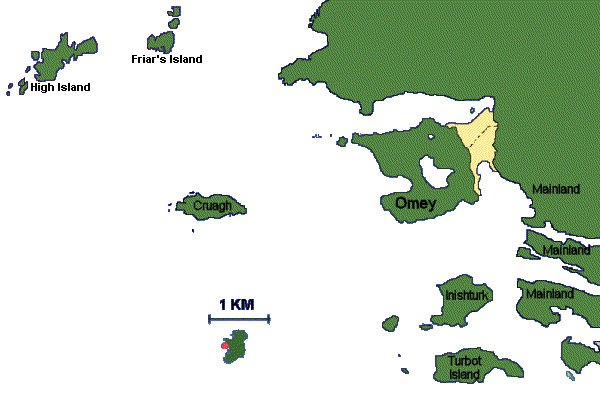High Island, high ideals
Gabriel Cooney
High island or Ardoileán is a small island about 3 kilometers off the north-west coast of Connemara. Like many of the small inlands off the Atlantic coast of Ireland it was chosen as a location for an early medieval monastery. The island is about a kilometre m maximum extent. The cliff's of the coastline explain the name of thy island and deep, narrow inlets give it a distinctive: indented shape. The monastic site ls situated in :a valley towards the southern end. From the 1960s to 1998 it was owned by Richard Murphy who in his High Island poems and in other collections reflected on the rich matinal remains of the earlier monastic inhabitants of the islands.
In the 1980s a programme of survey and subsequently archaeologlcal excavaion (directed by Georgina Scally) and conservation began. As the project gathered pace Colin Rynne canned out a detailed study of the monastic mill and Michael O'Connell, Jamce Fuller and John Conaghan undertook an investigation of the vegetational history of the Island. This review of work involved m the study of High Island is relevant, because central to White Marshall and Rourke:s book is their belief in a multidisciplinary approach. Their own particular strength is
architecturll and art history.
They undertake a detailed reading of the island, from the two main, but arduous, landing points towards the eastern end of the island to the monastic complex, followmg the path that a pilgrim might have taken. The strength of the book is in the detailed analysis of the monastery and its main elements. The authors demonstrate that most of what is visible dates to the last period of active occupation of the monastery, from the late 10th to sometime in the 12th century: Other elements, such as the water-mill, appear to date to the ninth or early 10th century. Nothing visible in the complex can be dated to the time of the attributed foundation of the monastery by St Féchín m the seventh century.
However, they argue strongly that the monastic enclosure wall was there before the foundation of the monastery and represents the transformation of a secular settlement into a sacred enclosure.We can perhaps too easily assume that the early medieval monastic world was a static, stable one. But it is clear that the High Island foundation went through a number of dramatic changes in the course of its history as requirements altered. On other hand, the burial of important individuals directly east of the chapel and.the incorporation of these burials into its east wall, throughout a number pf building. phases, indicates the continued focus on the sacred and on sacred space that was at the core of monastic life. High Island, like Skellig Michael, might be most immediately interpreted as a remote hermitage, with very few inhabitants. But
this image is hard to maintain in the light of Colin Rynne's discussion of the watemill and associated activity. AIl of this is suggestive of a community of a few dozen people. Was there such a community at some stage in the course of the history of the monastery? This is one of a number of intriguing questions that White Marshall and Rourke's book raises about High Island.
Their work has also made a major contribution to our understanding of the long-term history of the island. The pollen evidence suggests that there was activity after 1,000 BC. Material used in the flooring of the church gave dates between 300BC to 20 AD and provides a fascinating glimpse of an Iron Age settlement. After the active use of the monastery ended, the next visible phase of activity on the island is of 19th century mining. There are indications however in the movement of cross slabs and the building and reconstruction of penitential stations that the island continued lo be a focus of pilgrimage through to the modern period. Writing as an archaeologist one curious feature of the book is the partial incorporation of the results of the archaeological excavation which clearly have a central bearing on the development of the monastery. On the other hand this whets the appetite for the results of the excavation and other ongoing research. Most of us will never get to High Island but this book brings us there and engages thr reader in an unforgettable way with human history of this very special place.
As published in the Irish Times in March 2001
Reproduced with permission from Gabriel Cooney

